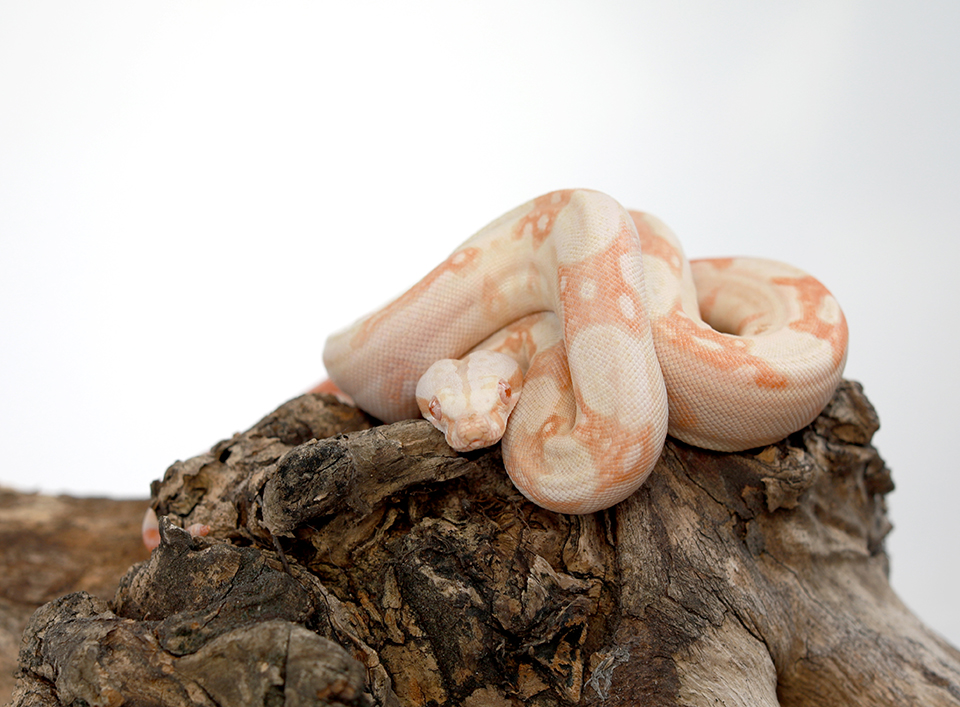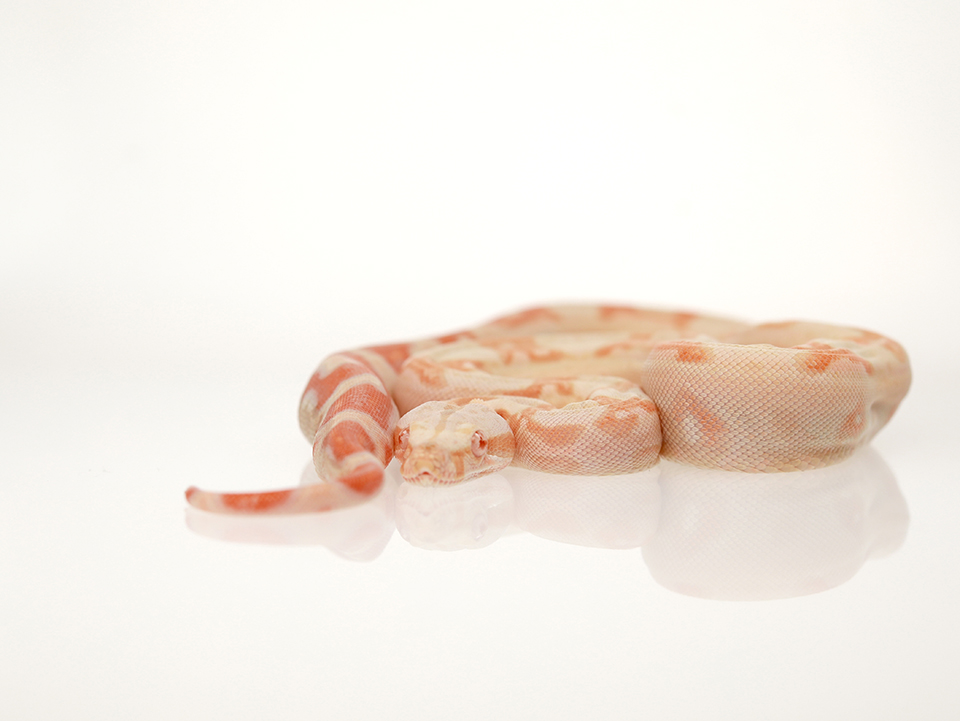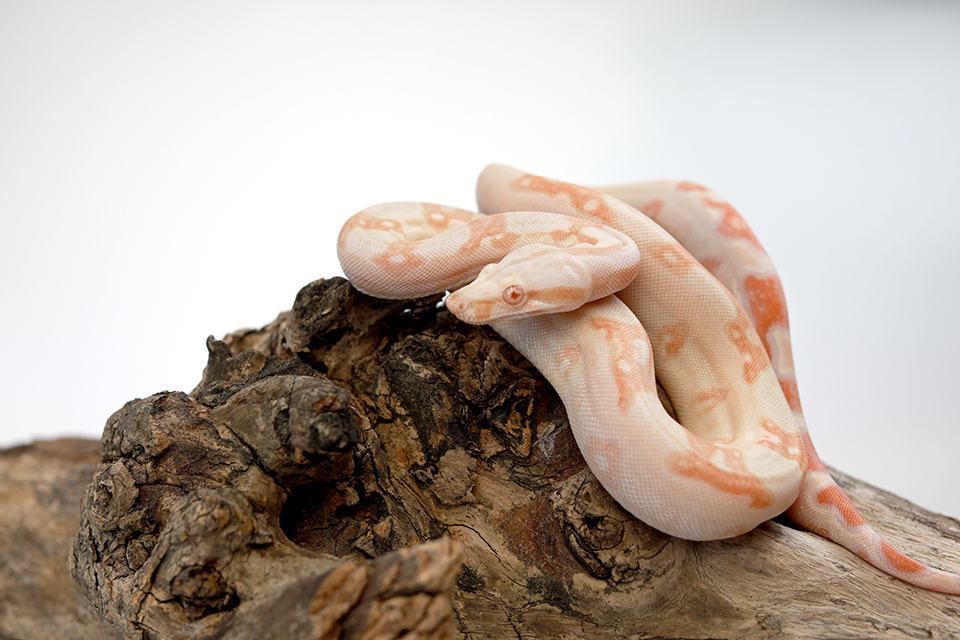THE KAHL STRAIN RED TAIL BOA

THE BOA FROM BRAZIL
Standing out from the reptile crowd with their distinctive, red-pattered coloration at the ends of their tails, the Red- Tailed Boa is a popular snake in the country and all over the world. These snakes have the rare distinction of their common English name being the same as their scientific binomial name: Boa constrictor. Native to Brazil and the surrounding rainforests and low-lands of South America and the Caribbean, these stylish serpents are about 8 to 10 feet in length and weigh about 50 pounds fully grown. If well-cared for, Red Tail Boas usually have a lifespan of 25 to 30 years.

Red Tail Boas need to have secure enclo-sures. These snakes are well-known to be escape artists, able to open unlocked lids and squeeze through even the smallest of openings. Remember to latch or lock your snake enclosure to prevent any escape attempts. An escaped boa is a danger to themself and to others.
Even though they are such huge, powerful snakes, Red Tail Boas are popular because of their docile temperament. They are not aggres-sive snakes in general, but they are extremely strong and can do some damage by biting or constricting on a person’s arm, neck, or leg even if they are not angry or upset.
THE KAHL STRAIN
Every now and then, an albino Red Tail Boa is born in the wild, the product of the combination of re-cessive genes. Four of these albinos were imported into the United States in 1983, and in 1992, one of them mated with a het Albino female to produce the first albino Boas in captivity. The person who success-fully facilitated this crossbreeding was Peter Kahl, which is why most this line of albino Red Tail Boas are referred to as Kahl Boas. One person who really understands snakes is Lester John de Jesus, who is the proud parent of the strikingly

“I also find it fascinating that Red Tail Boas are live bearers,” says de Jesus. Oviparous snakes, like ball pythons, lay their eggs and then in-cubate them until they hatch. Ovoviviparous snakes, such as boas, have live hatchlings that incubate inside the female. “Because of this, you won’t need to incubate eggs,” de Jesus explains.
beautiful Kahl strain Red Tail Boa featured here. Ani-mal Scene talked to him about his pride and joy. “Kahl strain boas, like other albinos in the species, have a complete lack of black pigments, making them look lighter than normal,” de Jesus explains. Kahl strain boas look pink and white, with the paleness being more pronounced in younger snakes. Like all constrictors, they have darker-colored “saddles” that become more and more pronounced toward the tail, which in Kahl strain boas are a deep shade of pink.

De Jesus has a lot of love for Red Tail Boas. “I have two more boas: a normal and a sunglow. I noticed that one thing they all have in common is that they don’t like having their bodies unsupported when I handle them with snake hooks. When I don’t support them, they panic and even try to bite me, so I look out for that.”
CARING FOR A RED TAIL BOA
Even though Red Tail Boas are docile, making them a great candidate for starting snake keepers, they are still a major commitment when it comes to caring for them, housing them, and feeding them. “Do make sure you research first about boas,” says de Jesus. “Research the size, temperament, diet, and enclosure needed.” One major reason for the level of commitment neces-sary is that the Red Tail Boa is a big snake, growing up to 10 feet in length. However, in practice they prefer to curl up rather than stretch out to their full length. An uncoiled snake is signaling that it is feeling threatened and vulnerable. Because boas come from a tropical environment, they adapt well to the local climate in the Philippines. “This type of boa thrives better inside an enclosure or in captivity in general,” explains de Jesus. “Because of the Albino boa’s lack of color, they lack the camouflage that helps normal boas hunt prey and protects them from other predators.” Boas are ambush predators that lie in wait for prey to come along before attacking.

FEEDING TIME
Unlike ball pythons, boas are not picky eaters. Juveniles will eat fuzzies, mice, and rats. When they reach adult-hood, boas will move on to eating large rats and rabbits. Move your snakes into a different cage when feeding them, which will train them to not mistake you for food and to not eat the substrate of their enclosure. “Boas are relatively easy to care for,” says de Jesus. “The only challenge for me is feeding. [When] they grow big, some feed [them] rabbits, which I cannot do because I find rabbits cute.”
COMMITMENT REQUIRED
Red Tail Boas, like the Kahl strain, are long-lived snakes who can get more expensive to feed as they get larger, and their enclosures can take more time and ef-fort to clean as they grow older. So, make sure that you are prepared for the commitment before you start caring for one.
Photos by JEFFREY C. LIM





